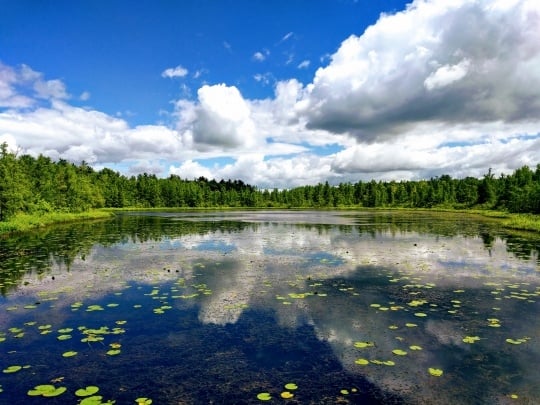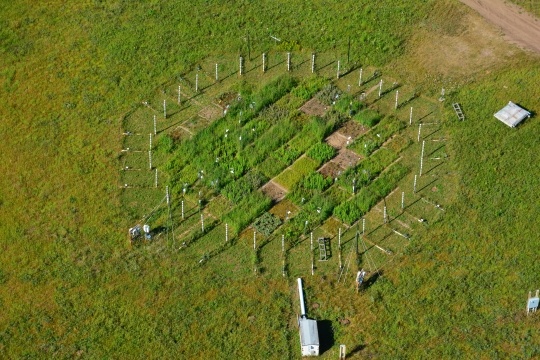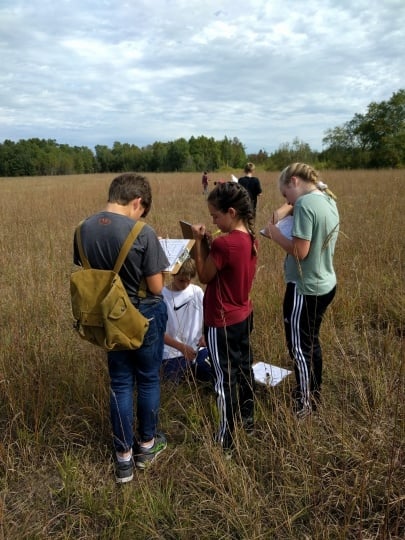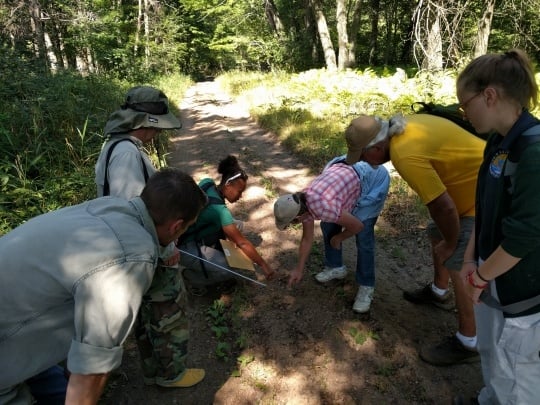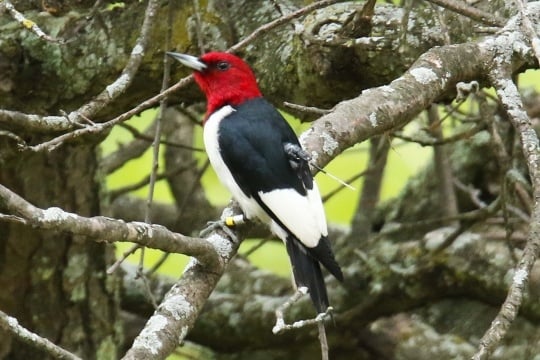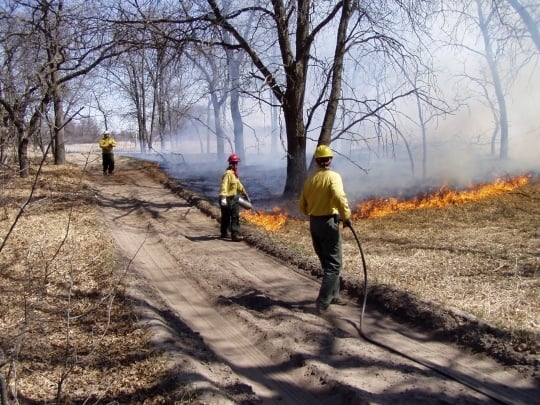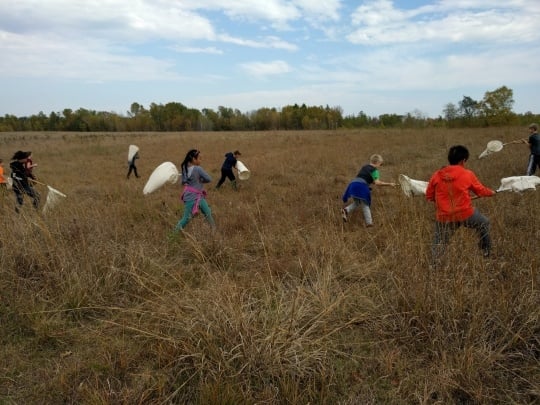Cedar Creek Ecosystem Science Reserve
Bibliography
Cedar Creek Ecosystem Science Reserve. BioCon: Biodiversity, CO2, and Nitrogen.
http://www.cedarcreek.umn.edu/research/experiments/e141
Cedar Creek Ecosystem Science Reserve. Biodiversity II: Effects of Plant Biodiversity on Population and Ecosystem Processes.
http://www.cedarcreek.umn.edu/research/experiments/e120
Cedar Creek Ecosystem Science Reserve. Education and Community Engagement at Cedar Creek.
http://www.cedarcreek.umn.edu/educationoutreach
Cedar Creek Ecosystem Science Reserve. Prescribed Burning. https://www.cedarcreek.umn.edu/conservation/prescribed-burning
Cedar Creek Natural History Area, Program Reports: University of Minnesota. Vols. 1 and 2. Cedar Creek Ecosystem Science Reserve Library, 1954–1987.
Hodson, A. C. History of Cedar Creek Natural History Area. Minneapolis: University of Minnesota Field Biology Occasional Papers, #2, 1985.
Hoffman, William. “The Tallgrass Prairie: Raymond Lindeman, A Minnesota Bog Lake, and the Birth of Ecosystems Ecology.” In Conservation on the Northern Plains: New Perspectives, edited by Anthony J. Amato, 1–31. [Sioux Falls, SD]: Center for Western Studies, Augustana University, 2017.
http://mbbnet.umn.edu/hoff/Lindeman-Hoffman2017.pdf
Long-Term Ecological Research Network. Cedar Creek Ecosystem Science Reserve.
http://www.lternet.edu/sites/cdr
Minnesota Department of Natural Resources. Anoka Sand Plain Subsection.
http://www.dnr.state.mn.us/ecs/222Mc
National Natural Landmark Program (NNLP). Cedar Creek Natural History Area―Allison Savanna.
https://www.nps.gov/subjects/nnlandmarks/site.htm?Site=CECR-MN
Pierce, Richard L. "Vegetation Cover Types and Land Use History of Cedar Creek." Master’s thesis, University of Minnesota, 1954.
Red-headed Woodpecker Recovery.
http://www.redheadrecovery.org
Schwartz, George M., and George A. Thiel. Minnesota’s Rocks and Waters: A Geological Story. Minneapolis: University of Minnesota Press, 1973.
Sterner, Robert W. Raymond Laurel Lindeman and the Tropic Dynamic Viewpoint.
St. Paul: University of Minnesota (Association for the Science of Limnology and Oceanography), 2012.
Ukura Kuechle, Carolyn. Animal Tracking Signals: Stories of the Development of Radio Telemetry in Minnesota. St. Cloud: North Star Press, 2009.
Chronology
11,000 years ago
ca. 800 CE–ca. 1850s CE
1856
1861
1936
1937–1950s
1942
1954
1975
1993
2008
2016
2017
Bibliography
Cedar Creek Ecosystem Science Reserve. BioCon: Biodiversity, CO2, and Nitrogen.
http://www.cedarcreek.umn.edu/research/experiments/e141
Cedar Creek Ecosystem Science Reserve. Biodiversity II: Effects of Plant Biodiversity on Population and Ecosystem Processes.
http://www.cedarcreek.umn.edu/research/experiments/e120
Cedar Creek Ecosystem Science Reserve. Education and Community Engagement at Cedar Creek.
http://www.cedarcreek.umn.edu/educationoutreach
Cedar Creek Ecosystem Science Reserve. Prescribed Burning. https://www.cedarcreek.umn.edu/conservation/prescribed-burning
Cedar Creek Natural History Area, Program Reports: University of Minnesota. Vols. 1 and 2. Cedar Creek Ecosystem Science Reserve Library, 1954–1987.
Hodson, A. C. History of Cedar Creek Natural History Area. Minneapolis: University of Minnesota Field Biology Occasional Papers, #2, 1985.
Hoffman, William. “The Tallgrass Prairie: Raymond Lindeman, A Minnesota Bog Lake, and the Birth of Ecosystems Ecology.” In Conservation on the Northern Plains: New Perspectives, edited by Anthony J. Amato, 1–31. [Sioux Falls, SD]: Center for Western Studies, Augustana University, 2017.
http://mbbnet.umn.edu/hoff/Lindeman-Hoffman2017.pdf
Long-Term Ecological Research Network. Cedar Creek Ecosystem Science Reserve.
http://www.lternet.edu/sites/cdr
Minnesota Department of Natural Resources. Anoka Sand Plain Subsection.
http://www.dnr.state.mn.us/ecs/222Mc
National Natural Landmark Program (NNLP). Cedar Creek Natural History Area―Allison Savanna.
https://www.nps.gov/subjects/nnlandmarks/site.htm?Site=CECR-MN
Pierce, Richard L. "Vegetation Cover Types and Land Use History of Cedar Creek." Master’s thesis, University of Minnesota, 1954.
Red-headed Woodpecker Recovery.
http://www.redheadrecovery.org
Schwartz, George M., and George A. Thiel. Minnesota’s Rocks and Waters: A Geological Story. Minneapolis: University of Minnesota Press, 1973.
Sterner, Robert W. Raymond Laurel Lindeman and the Tropic Dynamic Viewpoint.
St. Paul: University of Minnesota (Association for the Science of Limnology and Oceanography), 2012.
Ukura Kuechle, Carolyn. Animal Tracking Signals: Stories of the Development of Radio Telemetry in Minnesota. St. Cloud: North Star Press, 2009.










